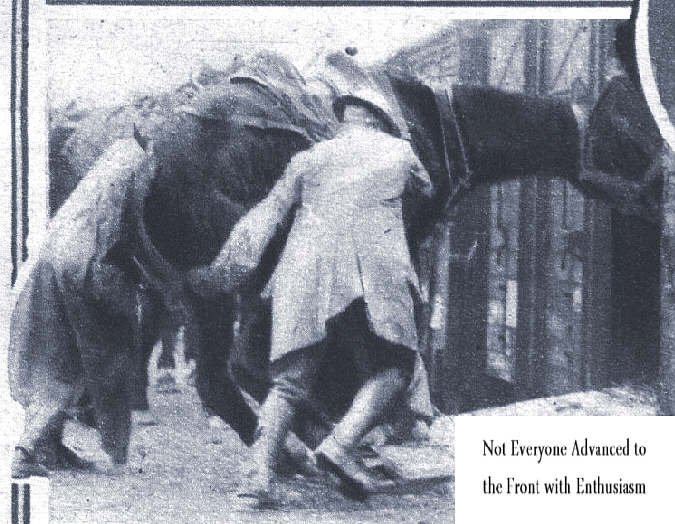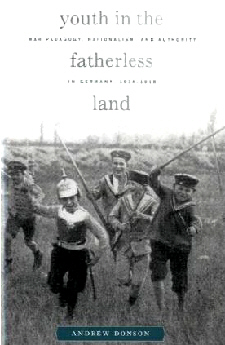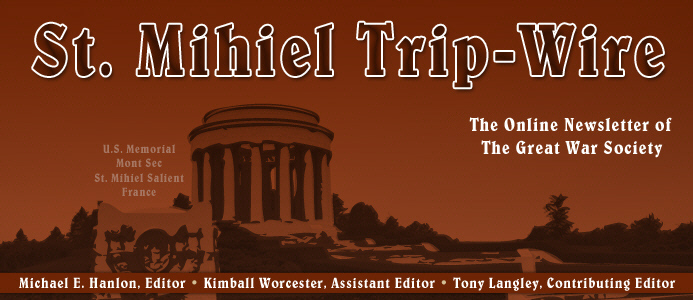

TRENCH REPORT: In some of our previous issues, we have reminded our readers of the coming centennial of the Great War. In 2011, we are going to do a better job of recognizing the 100th anniversary of some of the key events in the run-up to the war. For instance, 1911 saw the arrival of the German gunboat Panther in Agadir, triggering the Second Moroccan Crisis, considered a major stimulator of war fever . . . Alas, the Trip-Wire occasionally needs to print a correction. Remember last month, we provided access to a series of YouTube videos of readings of Great War poems, one of which was written by American French Legionnaire Alan Seeger? Well, Seeger expert Frank Jordan, has caught us out of school. Frank gently informed me that Seeger's well-known WWI poem should not be identified as "Rendezvous" since "The Rendezvous," a romantic piece (read here), is the title of another work by him. For the record, "I Have a Rendezvous with Death," is Seeger's war poem. MH
This Month's Internet Feature
The Doughboys from the Armistice
The AEF at the Armistice from Bradley Omanson
Doughboy Armistice Day in Flanders
Franks Buckles: Pershing's Last Patriot
U.S. Marines at War's End
World War I Victory Medal
America's Unknown Soldier
The Sad Tale of the Bonus Marchers
New at Our Own & Our Friends' Great War Websites
Click on Title or Icon to Access
|
Recommended by reader Tina Olson:
Meet Tina's dad, German Army veteran Karl von Soest at:
At Great War Society Sites
Major Articles at France at War from Trip-Wire Regulars:
At WFA-USA Sites
| The WFA Pacific Coast Branch has lost a valued member and friend on 28 November. William Strachan "Bill" Ince, publisher of the branch's excellent newsletter The Listening Post passed away that day.
|
|
The play Birdsong, a story of love and war is running at the Comedy Theater, London, through January 15. The play is based on Sebastian Faulk's 1993 novel of the same name about the Great War.
Call for Papers: The School of International Relations, Saint-Petersburg State University Invites you to participate in the Second International Conference "THE FIRST WORLD WAR, THE VERSAILLES SYSTEM AND THE CONTEMPORARY WORLD," 7-8 October 2011. (download flyer)
THE HAGUE: The German National Library, Oxford University, and Europeana have signed an agreement to digitize family papers and memorabilia from the First World War to create an online archive about the people involved in the conflict. (link)
|
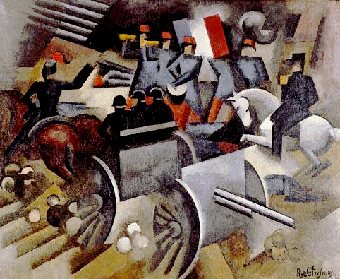
Artillery, 1911, Roger de La Fresnaye
An Early Cubist Prophesies the Coming War
|
GREAT WAR 2011 EVENT CALENDAR
|
A World War I Event Calendar
We will continue to maintain our WWI Calendar. There is simply more information than we can display here on the Trip-Wire. We count on all of you who schedule WWI events to contact us with new and updated information. Next month we will publish the 2011 calendar available to all.
(send an email with schedule information)
|
National World War I Seminar,
9-10 September, 2011
Citi-Garden Hotel
South San Francisco, CA
(Near S.F. International Airport)
(Check Back for Details)
|
WFA-Pacific Coast Branch Annual Seminar
March 4-6, 2011
Bay Street Armory,
Victoria BC
(flyer and registration form)
|
Western Front Association
U.S. Branch Chapter Meetings
Check for Your Region
Regularly Updated (details)
|
Great War Society Monthly Chapter Meetings
Berkeley, San Francisco, and
Palo Alto, CA
Regularly Updated (details)
|
Upcoming Events at the National World War I Museum
Kansas City, MO
New Exhibits and Lectures Scheduled
Regularly Updated (details)
|
Send additions/corrections for our master schedule:
Email Response
|
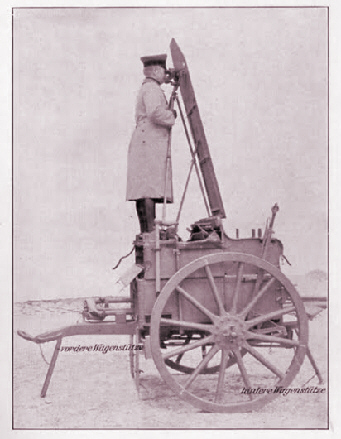
German Artillery Observation Ladder

Newly commissioned Ensign Logan C. Ramsey, USN, served in WWI on the battleship USS Texas part of the American squadron assigned to the Grand Fleet, which today is the last surviving dreadnought of the Great War. He had a future date with history, however. As a duty officer on 7 December 1941 Commander Ramsey would be the author of on one of the most famous war messages in American history: "Air raid Pearl Harbor, this is no drill." Ramsey retired from the navy as a rear admiral in 1949 after commanding an escort carrier and holding high staff positions in WWII.

Living discounts death.
I Am a Creature (poem),
Giuseppe Ungaretti, Italian Army
|
|
|
|
Page Two
|
|
|
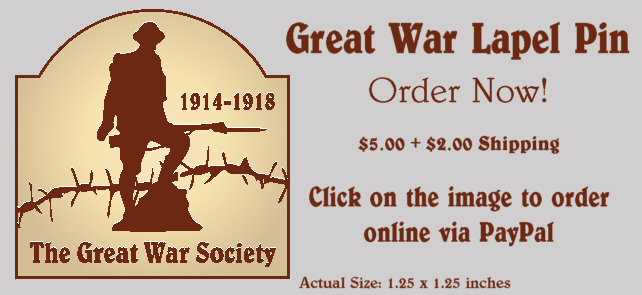 |
Meet the Mine Craters of Messines
Gentlemen, we may not make history tomorrow, but we shall certainly change the geography.General Hubert Plumer, 6 June 1917 |
| The Battle of Messines, opening on 7 June 1917 with the explosion of 19 mines over a ten-mile long sector of the front, was the successful and historic prelude to the otherwise disastrous Passchendaele campaign. The story of the battle is told in many sources. We reflect here, instead, on the second part of General Plumer's comment quoted above, which was made the night before the battle. The mines, indubitably, changed the local geography. The enormous explosions created lasting eyesores, fishing ponds, habitats, and some beautiful naturalistic war memorials. Here are five examples. |
|
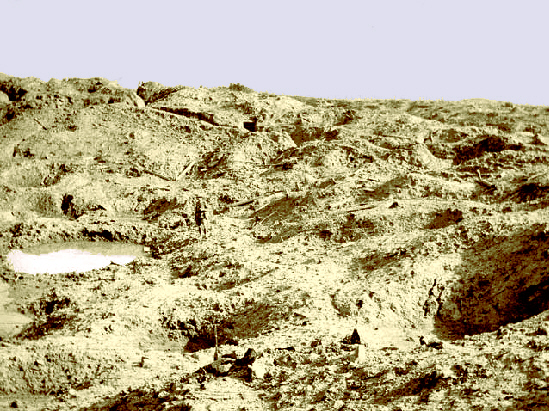
Hill 60A Mine
| The northern-most mine was blown under the grim battlefield of Hill 60, a manmade elevation constructed with the debris from the construction of an adjacent railroad cut. The hill remains perturbed and irregular with gross war wounds and, today, is so rugged looking and overgrown that we could not find a current-day photo clearly delineating the 1917 crater, which lies close to the rail line. The post-explosion image above is from the Australian War Memorial archives. To visualize now, imagine grass and 90-year-old trees overlaying this scene. The mine was dug by an Australian company, whose story is told in the recent movie Hill 60. |
|
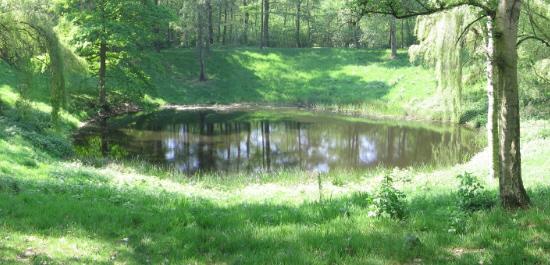
Caterpillar Mine, AKA Hill 60B Mine
| On the opposite side of the railroad cut lies a second, rather elongated artificial hill, known as the "Caterpillar" from the shape of its contours on trench maps, which was created from the same kind of remnants as Hill 60. It was the location one of the most "successful" mines of the operation, over 600 German soldiers perished here. However, unlike the crater on Hill 60, which is drained by the web of tunnels under the hill, this site retains rainwater and so the 100-foot-wide and 60-foot-deep crater fills, rising and falling with the rainfall. Off the beaten track yet accessible, it is a lovely and sombre destination for Western Front explorers. |
|
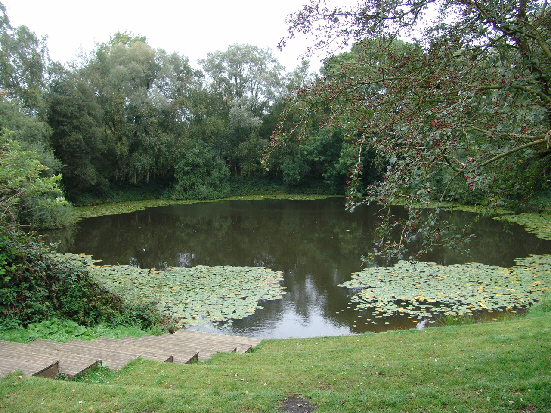
Spanbroekmolen Mine
| Further south, near the village of Messines, is the Spanbroekmolen Mine Crater, also known as Lone Tree Crater, site one of the largest of the 7 June mines. This water-filled crater was purchased by Lord Wakefield in the 1920s to be preserved as a memorial site on the Ypres Salient battlefields. The mine crater has subsequently been named the "Pool of Peace" and is today the property of Toc H (the Talbot House) in Poperinghe. |
|
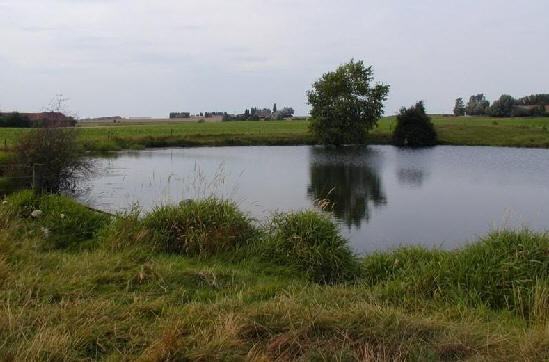
Kruisstraat Mine #2
| This is one of three mines immediately south of Spanbroekmolen. Created by over 40 tons of explosives, it was sited at the end of a 700m tunnel, well into the German lines in the path of the attacking 36th (Ulster) Division. It is said to be a popular fishing hole today. |
|
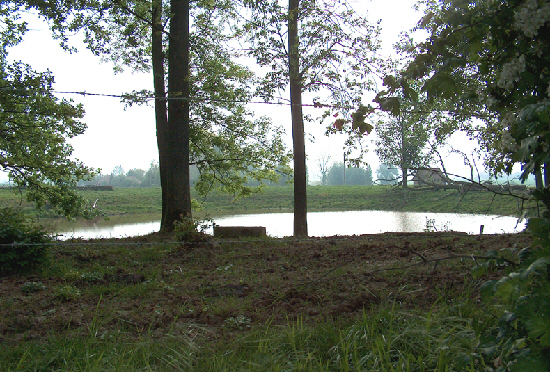
Trench 122 Mine
| One of the four southern-most mines all dug by the Canadian 3rd Tunnelling Company. It is on private land just north of "Plug Street" wood and close, as well, to one of the major sites of the 1914 Christmas Truce. |
|
|
|
World War I Headlines
in the
21st Century
|
|
Christina Holstein's Sleeping Beauties
The XIIth Century Church at Dugny-sur-Meuse
|
The Battle of Verdun saw the development of a vast number of hospitals and casualty clearing centres that were sufficiently far from the battle to be out of danger. In many cases existing large buildings such as chateaux and churches were pressed into service, one such being the old church with "fortified" tower in Dugny-sur-Meuse, a small town some three miles south of Verdun.
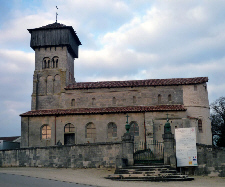
Church Exterior
Dedicated to the Nativity of the Virgin, this venerable building, which dates from the second quarter of the XIIth century, was an important triage centre from the start of the Battle of Verdun in February 1916 until the Armistice in November 1918. Day and night, ambulances -- which included American ambulance units in the service of the French Red Cross -- unloaded their cargoes of mangled flesh in front of the main door. New patients were examined in the chancel, where doctors dressed wounds and pharmacists gave anti-tetanus injections. The more lightly wounded waited on the pews in the nave, while stretcher cases were lined up in the aisle on the left of the nave. For many of the wounded it was a place of horror which rang with screams and reeked of decomposition and disinfectant. During the last great German offensive at Verdun hundreds of wounded and gassed men were brought here -- 1140 on 22 June alone -- many of whom were later evacuated to one of the other hospitals in the area.
|
On average, between 7,500 and 8,000 wounded and gassed men per month were triaged at the church, and, at certain times, tents had to be set up to cope with the endless flow of men needing care.
 Nave
Today the church is undergoing restoration and it is normally closed to the public, but on a recent visit I was fortunate enough to be able to go inside. There are no signs of its dramatic history during the First World War, and the workmen there were unaware that it had ever played a part in the Battle of Verdun. Time has passed, taking with it the memory of those tumultuous years during which Dugny played such an important role in the lives of so many men.
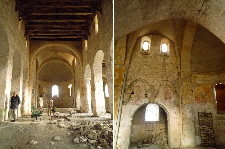
Two Views of Interior To Be Restored
|
|
|

Assassinat de Jaurès
Paris, 31 July 1914
|
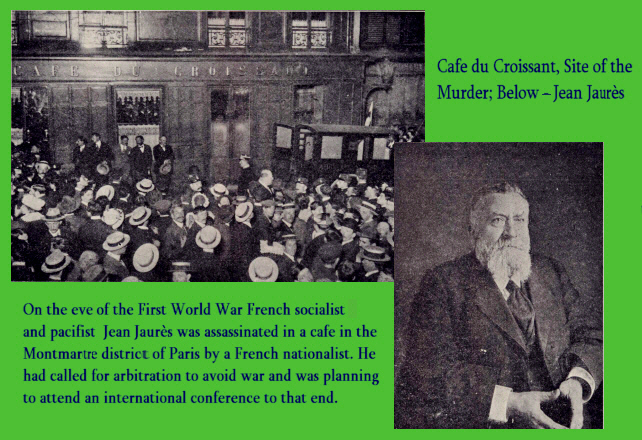
|
Click Here to Visit the Website of Our Contributing Editor Tony Langley
War in a Different Light
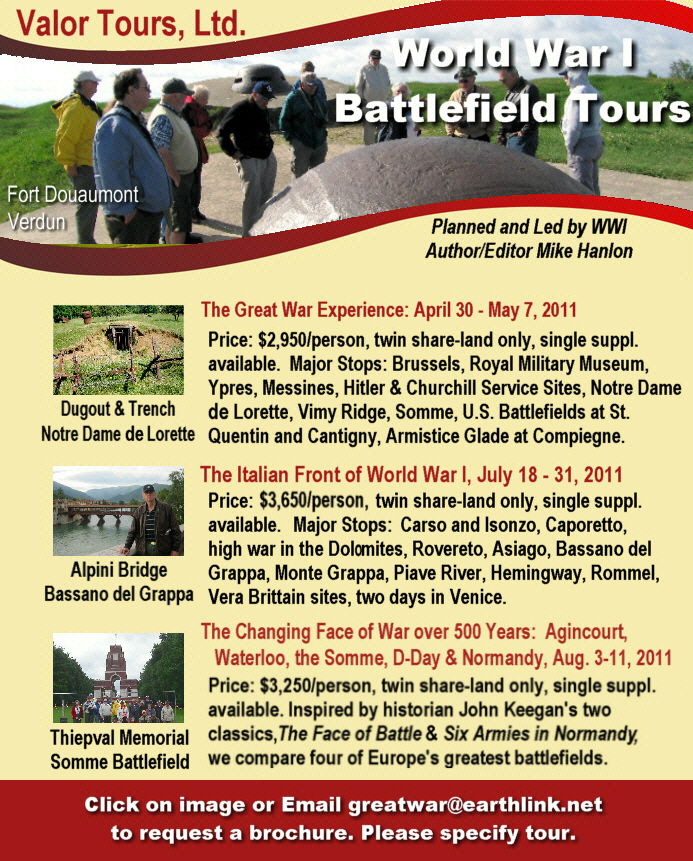
|
|
Subscribe to Our Online Magazine
|
|

|
|
|
Page Three
|
|
|
General Jack Pershing: Rooster Hero
|
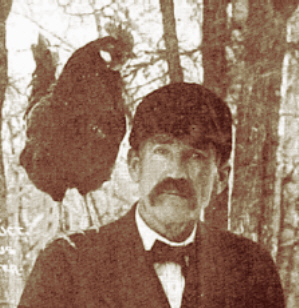
Pre-Stuffed General Jack Pershing
and Auctioneer D. R. "Casey" Jones |
During World War I, auctions were held across Iowa to raise money for the Red Cross Nursing Corps. Mark Dunkerson of Fontanelle had nothing to offer except a spare rooster, and the farmer who bought him decided that he was too mean to take home. The other bidders found that hilarious, and the rooster was auctioned again and again, each time being returned to the auctioneer.
By the end of the war "Jack Pershing" (named in honor of America's top general) had crisscrossed the state and raised $40,000, and was allowed to live out his retirement unmolested. He was eventually stuffed and put on display in the Iowa State Historical Museum at 600 E. Locust St., Des Moines. His success inspired the more elaborate exploits of King Neptune the Pig in World War II.
In 2001, Jack Pershing was again put up for auction, this time to raise money for the Red Cross September 11th Disaster Relief Fund. His stuffed carcass brought in over $1,800, and was then returned to its glass case, more loved by Iowa than ever.
From: Roadsideamerica.com
|
|
|
|
 |
Youth in the Fatherless Land:
War Pedagogy, Nationalism and Authority in Germany, 1914-1919
by Andrew Donson
Reviewed by Len Shurtleff
|
Editor's Note: This review was inspired by last issue's "Real Deal" feature, a German photographic postcard of a girls' class during the war.
This is a fascinating study of the corrosive effect of total war on Germany from 1914-1918, with particularly emphasis of the impact of social mobilization and political polarization of civilian youth. Donson finds that German middle class youth who grew up steeped in nationalist war propaganda and inured to violence and embittered by disastrous defeat, turned to right wing fascist politics and armed Freikorps. Conversely, working class youth often turned to radical-left organizations after 1918 because they believed the moderate Social Democratic Party had sold out the working class first by supporting the Kaiser's war and then by failing to reform Germany when they gained power under the Weimar Constitution. Thus the Weimar government was crippled from the start and fated to be torn apart by violent political strife. The radical polarization of many German youth who were the cannon fodder for this political violence was the result of mass youth mobilization, the breakdown of family structures, and the hunger and depravation caused in part by the Royal Naval blockade and in part by German administrative incompetence.
The decline in adult authority over youth was the result of mass conscription of authority figures -- heads of family, police, teachers, and party youth leaders -- the breakdown of schooling as the war progressed, the fracturing of families, decreasing supervision at work and the opening of commercial leisure to well-paid youthful workers not yet subject to conscription, but drawn to crime and violence.
The author finds in this thorough and sophisticated sociological study many of the same wartime fissures identified by Roger Chickering in his study of the city of Freiberg, The Great War and Urban Life in Germany (Cambridge, 2009). He demonstrates why and how many thousands of the war generation were drawn to the Nazi and Communist movements which ravaged Germany more than 20 years following the end of World War One.
Youth in the Fatherless Land: War Pedagogy, Nationalism and Authority in Germany, 1914-1919, Andrew Donson, Harvard, 2010, 330 pages, photos, graphs, index, bibliography, notes, ISBN 978 0 764 04983 3, $49.95 HB.
|
|
|
|




















